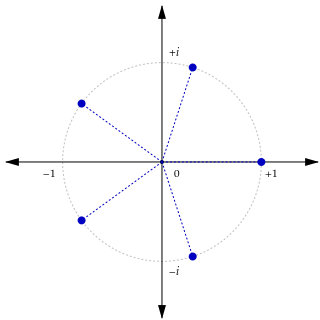In physics and mathematics, a symplectic vector field is one whose flow preserves a symplectic form. That is, if is a symplectic manifold with smooth manifold and symplectic form , then a vector field in the Lie algebra is symplectic if its flow preserves the symplectic structure. In other words, the Lie derivative of the vector field must vanish:

Physics is the natural science that studies matter and its motion and behavior through space and time and that studies the related entities of energy and force. Physics is one of the most fundamental scientific disciplines, and its main goal is to understand how the universe behaves.

Mathematics includes the study of such topics as quantity, structure, space, and change.
In mathematics, a symplectic manifold is a smooth manifold, M, equipped with a closed nondegenerate differential 2-form, ω, called the symplectic form. The study of symplectic manifolds is called symplectic geometry or symplectic topology. Symplectic manifolds arise naturally in abstract formulations of classical mechanics and analytical mechanics as the cotangent bundles of manifolds. For example, in the Hamiltonian formulation of classical mechanics, which provides one of the major motivations for the field, the set of all possible configurations of a system is modeled as a manifold, and this manifold's cotangent bundle describes the phase space of the system.
- . [1]
An alternative definition is that a vector field is symplectic if its interior product with the symplectic form is closed. [1] (The interior product gives a map from vector fields to 1-forms, which is an isomorphism due to the nondegeneracy of a symplectic 2-form.) The equivalence of the definitions follows from the closedness of the symplectic form and Cartan's magic formula for the Lie derivative in terms of the exterior derivative.

In mathematics, an isomorphism is a homomorphism or morphism that can be reversed by an inverse morphism. Two mathematical objects are isomorphic if an isomorphism exists between them. An automorphism is an isomorphism whose source and target coincide. The interest of isomorphisms lies in the fact that two isomorphic objects cannot be distinguished by using only the properties used to define morphisms; thus isomorphic objects may be considered the same as long as one considers only these properties and their consequences.
In differential geometry, the Lie derivative, named after Sophus Lie by Władysław Ślebodziński, evaluates the change of a tensor field, along the flow defined by another vector field. This change is coordinate invariant and therefore the Lie derivative is defined on any differentiable manifold.
On a differentiable manifold, the exterior derivative extends the concept of the differential of a function to differential forms of higher degree. The exterior derivative was first described in its current form by Élie Cartan in 1899; it allows for a natural, metric-independent generalization of Stokes' theorem, Gauss's theorem, and Green's theorem from vector calculus.
If the interior product of a vector field with the symplectic form is an exact form (and in particular, a closed form), then it is called a Hamiltonian vector field. If the first De Rham cohomology group of the manifold is trivial, all closed forms are exact, so all symplectic vector fields are Hamiltonian. That is, the obstruction to a symplectic vector field being Hamiltonian lives in . In particular, symplectic vector fields on simply connected manifolds are Hamiltonian.
In mathematics and physics, a Hamiltonian vector field on a symplectic manifold is a vector field, defined for any energy function or Hamiltonian. Named after the physicist and mathematician Sir William Rowan Hamilton, a Hamiltonian vector field is a geometric manifestation of Hamilton's equations in classical mechanics. The integral curves of a Hamiltonian vector field represent solutions to the equations of motion in the Hamiltonian form. The diffeomorphisms of a symplectic manifold arising from the flow of a Hamiltonian vector field are known as canonical transformations in physics and (Hamiltonian) symplectomorphisms in mathematics.

In mathematics, de Rham cohomology is a tool belonging both to algebraic topology and to differential topology, capable of expressing basic topological information about smooth manifolds in a form particularly adapted to computation and the concrete representation of cohomology classes. It is a cohomology theory based on the existence of differential forms with prescribed properties.
In mathematics, obstruction theory is a name given to two different mathematical theories, both of which yield cohomological invariants.
The Lie bracket of two symplectic vector fields is Hamiltonian, and thus the collection of symplectic vector fields and the collection of Hamiltonian vector fields both form Lie algebras.
In the mathematical field of differential topology, the Lie bracket of vector fields, also known as the Jacobi–Lie bracket or the commutator of vector fields, is an operator that assigns to any two vector fields X and Y on a smooth manifold M a third vector field denoted [X, Y].

In mathematics, a Lie algebra is a vector space together with a non-associative, alternating bilinear map , called the Lie bracket, satisfying the Jacobi identity.








